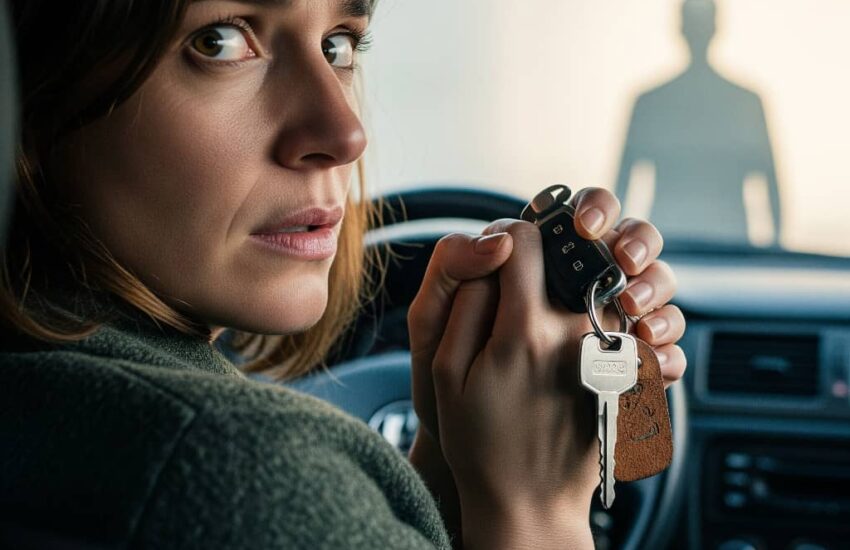Domestic violence thrives in silence and isolation. This piece explores the hidden realities, the complex psychology, and the pathways to safety and healing. The first time it happened, she told herself it was a fluke, that everyone loses their temper sometimes. The second time, she decided it was her fault for provoking him. By the seventh time, she stopped counting and started hiding. That’s how domestic violence works: not as a single explosive event, but as a slow, insidious erosion of self-worth that makes the unacceptable gradually feel inevitable.
I learned about domestic violence not through statistics or news reports, but through my friend Anna, who lived it for three years before she found the courage to whisper the truth. What surprised me most wasn’t the violence itself, though that was shocking enough but the sophisticated psychological prison her partner had built around her. He didn’t just hit her; he convinced her she deserved it. He isolated her from friends and family, monitored her communications, and controlled her finances so precisely that she couldn’t even buy groceries without his permission. The physical bruises healed relatively quickly once she left. The psychological scars took years to fade.
One of the most misunderstood aspects of domestic violence is why victims stay. People outside the situation often ask, “Why doesn’t she just leave?” as if it were as simple as walking out the door. What they don’t understand is that leaving is often the most dangerous moment in an abusive relationship. Statistics show that a victim is seventy times more likely to be killed in the two weeks after leaving than at any other time during the relationship. Abusers don’t respond to departure with resignation; they respond with escalation. My friend spent months secretly planning her exit, stashing small amounts of cash, arranging a safe place to go, gathering important documents. She knew that if he suspected she was leaving, he might kill her.
The financial abuse component traps countless victims. Anna’s partner had gradually forced her to quit her job, insisting he should be the provider. He then used that financial dependence as a control mechanism, doling out small amounts of cash while complaining about her spending habits. When she finally left, she had no credit history, no recent work experience, and no access to the marital assets. Starting over meant not just emotional recovery but financial rebuilding from zero.
Technology has created new forms of abuse that many people don’t recognize as domestic violence. GPS trackers on phones, hidden cameras in homes, social media surveillance—these aren’t plot points from a thriller movie but realities for many victims. Anna’s partner installed spyware on her laptop that allowed him to read every email and see every website she visited. He used this information to further isolate her, questioning her about innocent interactions until she stopped communicating with people altogether to avoid his interrogations.
The legal system, while well-intentioned, often fails victims in practical ways. Restraining orders require documentation and court appearances that can be nearly impossible for someone being closely monitored. Shelters frequently have waiting lists, and many victims have pets they refuse to abandon, yet few shelters accommodate animals. These practical barriers become insurmountable mountains for someone already operating in survival mode.

Healing is a nonlinear process that looks nothing like the dramatic transformations shown in movies. After leaving, Anna struggled with hypervigilance, jumping at sudden noises and scanning parking lots for his car. She had to relearn basic decision-making after years of having all choices made for her. Simple acts like choosing what to eat for dinner or what movie to watch became anxiety-provoking events because she’d lost trust in her own judgment.
What helped most wasn’t grand gestures but consistent, practical support. Friends who didn’t pressure her to “just move on” but instead helped her navigate the welfare system. A therapist who specialized in trauma and understood that recovery happens at the pace of the nervous system, not the calendar. A support group where she could speak openly without seeing pity in people’s eyes.
The most powerful moment in her healing came when she began helping other survivors. By sharing her story without shame, she reclaimed the narrative that had been used against her. She now works with a local organization that provides emergency phones to victims, knowing firsthand how dangerous it can be to use a tracked device when planning to leave.
Domestic violence doesn’t discriminate by income, education, or background. It exists in wealthy suburbs and rural communities, in highly educated households and struggling neighborhoods. What all victims share is the gradual, systematic dismantling of their autonomy until escape seems impossible.
If you suspect someone is experiencing domestic violence, don’t wait for them to ask for help, they likely won’t. Make specific offers of support: “I’ll keep a go-bag for you at my house” or “Here’s a burner phone you can hide.” Most importantly, maintain connection without judgment. Isolation is the abuser’s greatest tool, and consistent friendship can be a lifeline that eventually helps someone find their way to safety.
References
Bureau of Justice Statistics. (1996). Domestic and sexual violence data collection: A report to Congress under the Violence Against Women Act. U.S. Department of Justice. Retrieved from https://bjs.ojp.gov/library/publications/domestic-and-sexual-violence-data-collection-report-congress-under-violence
Moran, P., et al. (2023). Exploring factors influencing domestic violence: An econometric analysis. Frontiers in Psychiatry, 14, Article 1243558. https://doi.org/10.3389/fpsyt.2023.1243558
Light, M., Oram, S., & Wylie, L. (2022). The mental health implications of domestic violence during COVID-19. International Journal of Public Health, 67, Article 1604240. https://doi.org/10.3389/ijph.2021.1604240
McLean Hospital. (2025). Domestic violence, trauma, and mental health support. Retrieved from https://www.mcleanhospital.org/essential/domestic-violence
World Health Organization. (2024). Violence against women. Retrieved from https://www.who.int/news-room/fact-sheets/detail/violence-against-women
Jewkes, R. (2014). Domestic violence and abuse in intimate relationships from public health perspective. Current Opinion in Psychiatry, 27(3), 1-13. PMC4768593. https://www.ncbi.nlm.nih.gov/pmc/articles/PMC4768593/

